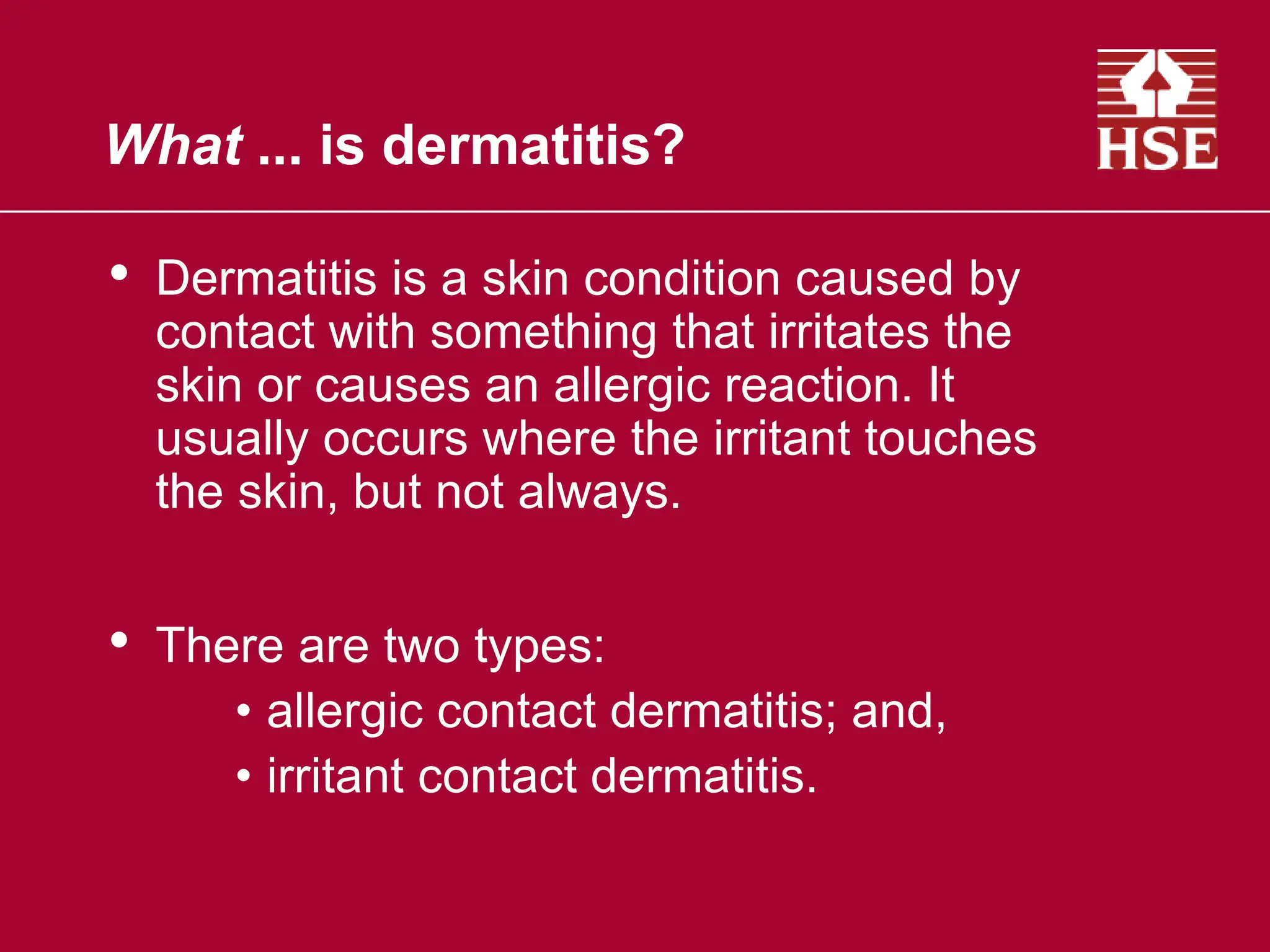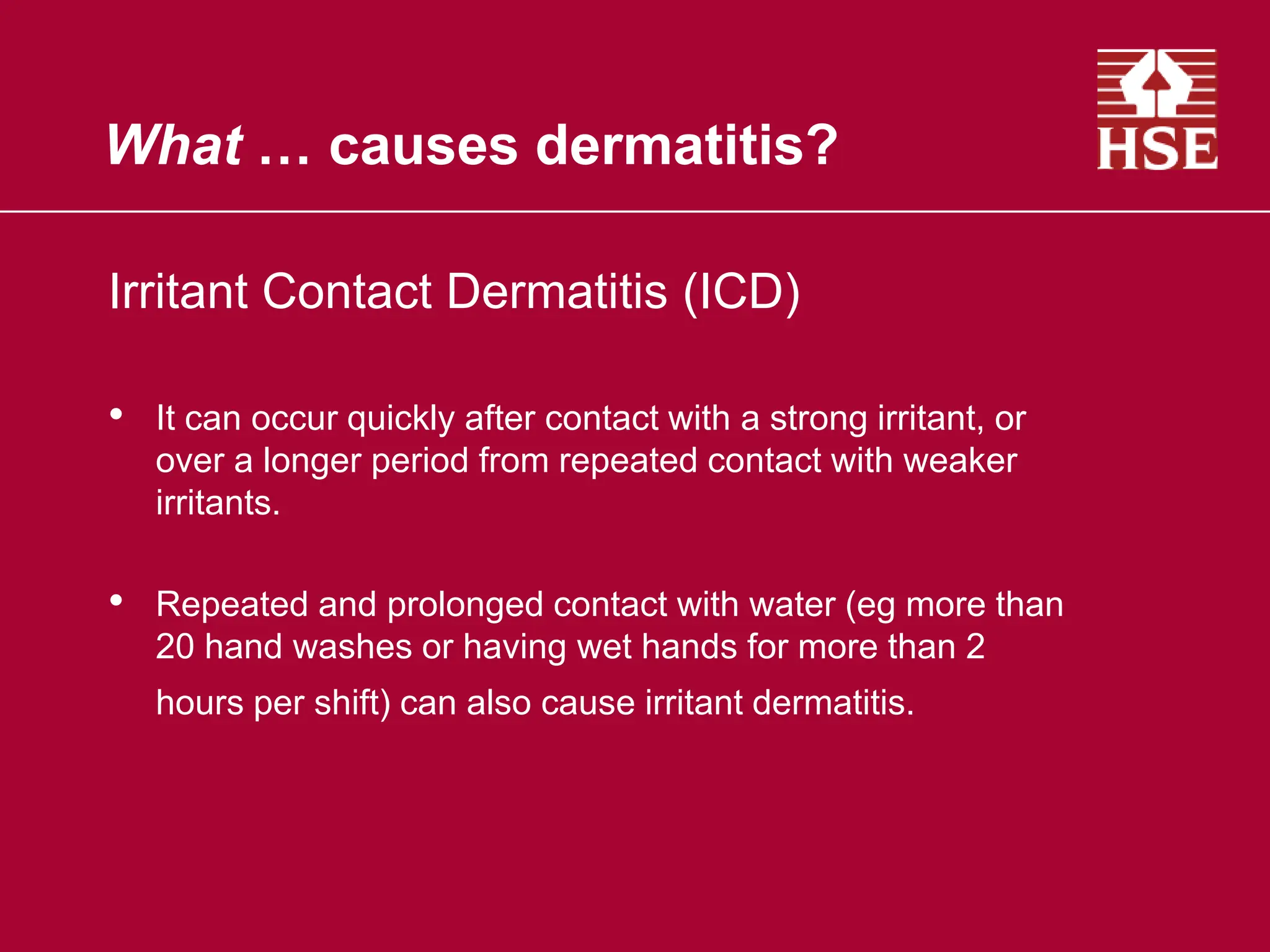This document discusses occupational dermatitis and answers common questions about it. It defines dermatitis as a skin condition caused by contact with an irritant or allergen. The two main types are allergic contact dermatitis and irritant contact dermatitis. Common causes include wet work, chemicals, plants, foods and metals. The document outlines signs and symptoms, relevant legislation, and best practices for employers including conducting risk assessments, implementing controls, providing protective equipment and conducting health surveillance when appropriate. It provides examples of leading and lagging indicators that can be monitored and discusses the hierarchy of controls and when health surveillance is required by law.

































